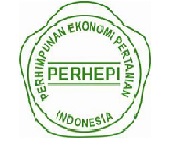Bimbingan Teknis Pupuk Organik Cair untuk Meningkatkan Produksi Karet Rakyat di Payaraman Barat Kabupaten Ogan Ilir
Abstract
Technical Assistance Using Liquid Organic Fertilizer for Improving Small-Scale Rubber Production in Payaraman Barat, Kabupaten Ogan Ilir. Liquid organic fertilizer (POC) is getting more attention from users (researchers, farmers, planters and others) because of the various advantages it has. Its manufacture is not too difficult and can use local raw materials ( agricultural waste, market waste or potential household organic waste). One of the advantages is that it can reduce the cost of fertilization. POC can be used to improve soil fertility and it is hoped that in the end it will be able to increase the productivity of rubber plants. This community service activity aims to provide technical guidance on how to make POC in a simple way and then apply it to rubber plants, accompanied by sanitation of the garden environment by cleaning weeds. There are four waste materials or plant materials used to make POC, namely pineapple peel waste, papaya fruit, banana peel and water hyacinth. The material is fermented in a simple reactor made of a gallon or bucket of used paint that is perforated and fitted with a faucet. The fermentation process is assisted by black soldier flies which will come into the reactor by themselves. After two weeks it will begin to produce fermented liquid. After four weeks the liquid is dried in the sun until it turns dark brown and is ready to use. In this activity, doses of 10, 20, 30 or 40 mL of POC were dissolved into 1 liter. The results of the socialization showed that 15 members of the farmer group did not know about POC and were very interested in using it. Preliminary data (n=30) showed a fairly large variation in sap production (59.7±48.6 grams/tree). Some rubber stems do not release sap, and the highest can reach 142.9 grams/tree with an average of 41 to 83 grams/tree. The collection of results is carried out every week according to latex sales. After 4 weeks of application of POC pineapple peel production can reach 165 to 470 grams/tree.
Keywords
Full Text:
PDF (Bahasa Indonesia)References
Apulina, S., Sumono, & Rohanah, A. (2019). Kajian Sifat Fisika dan Kimia Tanah Inceptisol pada Lahan Karet telah Menghasilkan dengan Beberapa Jenis Vegetasi yang Tumbuh di Kebun PTPN III Sarang Giting. Jurnal Rekayasa Pangan Dan Pertanian, 7(3), 196–203.
Dalimunthe, C. I., Fairuzah, Z., & Daslin, A. (2015). Ketahanan Lapangan Tanaman Karet Klon IRR Seri 100 terhadap Tiga Patogen Penting Penyakit Gugur Daun. Jurnal Penelitian Karet, 33(1), 35–46. https://doi.org/10.22302/jpk.v33i1.169
Dinas Perkebunan Kabupaten Ogan Ilir. (2017). Luas Areal Perkebunan Karet Kecamatan di Kabupaten Ogan Ilir. Badan Pusat Statistik, Ogan Ilir.
Fahrin, W., Mahdalena, M., & Hamidah, H. (2017). Aplikasi Kompos Dengan Aktivator Effective Microorganisms 4 (EM 4) Dan Pupuk Organik Cair NASA Pada Pertumbuhan Bibit Batang Bawah Tanaman Karet (Hevea brasiliensis). Agrifarm : Jurnal Ilmu Pertanian, 6(1), 21–26. https://doi.org/10.24903/ajip.v6i1.4
Hasibuan, S., Nugraha, M. R., Kevin, A., Rumbata, N., Syahkila, S., Dhewanty, S. A., … Shafira, T. (2021). Pemanfaatan Limbah Cangkang Telur sebagai Pupuk Organik Cair di Kecamatan Rumbai Bukit. PRIMA: Journal of Community Empowering and Services, 5(2). https://doi.org/10.20961/prima.v5i2.54635
Hendi Andrean. (2021). Pengendalian Gulma pada Tanaman Karet (Hevea brasiliensis Mull, Arg.) di Instalasi Benih Perkebunan Kualu UPT TPH BUN Provinsi Riau. Jurnal Agro Indragiri, 7(1), 5–10. https://doi.org/10.32520/jai.v7i1.1631
Kusdiana, A. P. J., Syafaah, A., & Ismawanto, S. (2018). Resistensi Tanaman Karet Klon IRR Seri 300 terhadap Penyakit Gugur Daun Colletotrichum di Sumatera Selatan. Jurnal Penelitian Karet, 36(2), 147–156. https://doi.org/10.22302/ppk.jpk.v36i2.555
Meriatna, M., Suryati, S., & Fahri, A. (2019). Pengaruh Waktu Fermentasi dan Volume Bio Aktivator EM4 (Effective Microorganisme) pada Pembuatan Pupuk Organik Cair (POC) dari Limbah Buah-Buahan. Jurnal Teknologi Kimia Unimal, 7(1), 13–29. https://doi.org/10.29103/jtku.v7i1.1172
Nurjannah, N., Arfah, N., & Fitriani, N. (2018). Pembuatan Pupuk Organik Cair dari Limbah Biogas. Journal of Chemical Process Engineering, 3(1), 43–46. https://doi.org/10.33536/jcpe.v3i1.193
Purwaningrum, Y., & Asbur, Y. (2019). Karakter Fisiologi Lateks dan Hubungannya dengan Produksi Lateks Klon GT 1 di Kebun Rakyat Kabupaten Langkat. Jurnal Penelitian Karet, 37(1), 21–30. https://doi.org/10.22302/ppk.jpk.v37i1.603
Putra, B. W. R. I. H., & Ratnawati, R. (2019). Pembuatan Pupuk Organik Cair dari Limbah Buah dengan Penambahan Bioaktivator EM4. Jurnal Sains Dan Teknologi Lingkungan, 11(1), 44–56. https://doi.org/10.20885/jstl.vol11.iss1.art4
Rasmito, A., Hutomo, A., & Hartono, A. P. (2019). Pembuatan Pupuk Organik Cair dengan Cara Fermentasi Limbah Cair Tahu, Starter Filtrat Kulit Pisang dan Kubis, dan Bioaktivator EM4. Jurnal IPTEK, 23(1), 55–62. https://doi.org/10.31284/j.iptek.2019.v23i1.496
Saputra, J. (2018). Strategi Pemupukan Tanaman Karet dalam Menghadapi Harga Karet yang Rendah. Warta Perkaretan, 37(2), 75–86. https://doi.org/10.22302/ppk.wp.v37i2.584
Sholahuddin, S., Wijayanti, R., Supriyadi, S., & Subagiya, S. (2021). Potensi Maggot (Black Soldier Fly) sebagai Pakan Ternak di Desa Miri Kecamatan Kismantoro Wonogiri. PRIMA: Journal of Community Empowering and Services, 5(2). https://doi.org/10.20961/prima.v5i2.45033
Suhastyo, A. A. (2019). Pemberdayaan Kelompok Wanita Tani Melalui Pelatihan Pembuatan Pupuk Organik Cair. Jurnal PPKM, 6(2), 60–64. https://doi.org/10.32699/ppkm.v6i2.580
Zulkipli, Z., Yakup, Y., Sodikin, E., & Syawal, Y. (2016). Pengaruh Interval Pengendalian Gulma dan Aplikasi Herbisida terhadap Pertumbuhan Gulma dan Tanaman Karet TBM. Jurnal Penelitian Karet, 34(2), 213–224. https://doi.org/10.22302/ppk.jpk.v34i2.237
DOI: https://doi.org/10.20961/prima.v6i2.61005
Refbacks
- There are currently no refbacks.
View My Stats

This work is licensed under a Creative Commons Attribution-ShareAlike 4.0 International License.


.jpg)



1.jpg)











